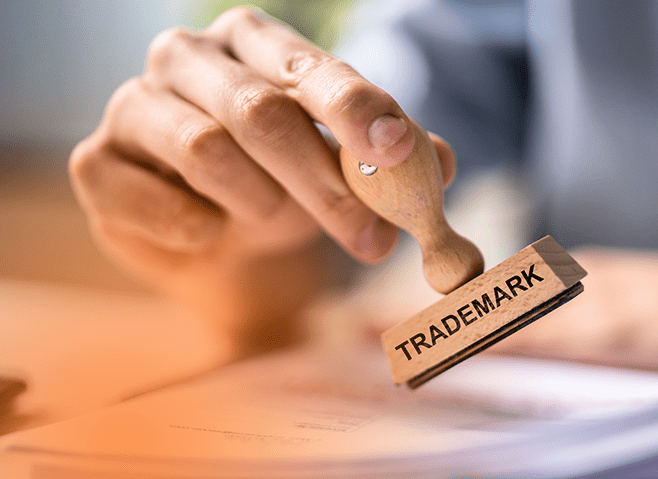While starting a new venture is thrilling and full of promise, many entrepreneurs overlook one critical step—trademarking their brand. Your name and logo aren’t just design elements; they represent your identity and reputation in the marketplace. Securing a trademark before you launch helps prevent others from copying your hard work and ensures your brand stands out from the start. In this article, we’ll cover seven important reasons why trademark protection should be a priority. From earning customer trust to gaining a competitive edge, taking this proactive step can make a significant difference in your long-term success. Don’t wait—learn how to safeguard your brand and build with confidence.
1. Understanding Trademarks: What You Need to Know
Before diving into why trademarks matter, let’s clarify what they actually are. A trademark is a legally protected symbol, word, name, or design that distinguishes your products or services from competitors. Unlike copyrights (which protect creative works) or patents (which protect inventions), trademarks specifically protect brand identifiers.
Key trademark facts every entrepreneur should know:
- Trademarks can last indefinitely as long as you continue using them and file maintenance documents
- They provide exclusive rights to use your mark in connection with your goods or services
- Registration gives you legal presumption of ownership nationwide
- The ® symbol can only be used after federal registration is complete
- Common law rights exist without registration but offer limited protection
According to the U.S. Patent and Trademark Office, businesses with registered trademarks are 50% more likely to survive their first five years than those without this protection.
2. The Importance of Brand Identity in Today’s Market
Your brand identity goes beyond just visual elements—it encompasses everything that makes your business recognizable and memorable. In today’s crowded marketplace, standing out is essential.
A strong, protected brand identity:
- Creates instant recognition among consumers
- Differentiates your products from competitors
- Communicates your values and mission
- Builds customer loyalty and emotional connections
- Establishes credibility in your industry
When you trademark your name and logo, you’re not just protecting images or words—you’re securing the foundation of your business reputation and the ability to build brand equity over time.
3. Legal Protection: How Trademarks Safeguard Your Business
Perhaps the most compelling reason to trademark your brand assets is the legal shield it provides. Without proper registration, your business remains vulnerable to infringement that could cost you thousands in legal fees and lost revenue.
A registered trademark gives you:
- Legal standing to sue infringers in federal court
- The ability to recover damages, including profits and attorney fees
- Protection against counterfeit products bearing your mark
- The right to request customs officials block imports using your mark
- Presumption of ownership in all 50 states
Consider this: resolving trademark disputes without prior registration can cost 5-10 times more than securing protection proactively. The average trademark infringement lawsuit costs between $120,000 and $750,000—a devastating blow to a new business.
4. Building Trust with Your Customers Through Brand Protection
Consumer trust is the cornerstone of business success. When customers see the ® symbol next to your brand name, it signals professionalism, legitimacy, and commitment to quality.
Trademarked brands enjoy:
- Higher consumer confidence levels
- Greater perceived value for products and services
- Increased customer loyalty and repeat business
- Better protection against counterfeit products that might harm consumers
- Enhanced reputation in the marketplace
Studies show that 82% of consumers are more likely to trust businesses with protected brand assets. This trust translates directly to sales—consumers are willing to pay up to 14% more for products from brands they perceive as legitimate and established.
5. Preventing Infringement: Why Early Trademarking Matters
Many entrepreneurs make the costly mistake of postponing trademark registration until after launch. This approach creates dangerous vulnerabilities that can derail your business before it gains traction.
Early trademark registration prevents:
- Having to rebrand after establishing market presence
- Loss of investment in marketing materials and packaging
- Customer confusion when competitors use similar marks
- Geographic limitations on business expansion
- The nightmare scenario of being sued for infringing someone else’s mark
The trademark search and registration process takes 8-12 months on average. By starting before launch, you ensure protection is in place when you begin marketing efforts.
6. Enhancing Your Brand Value and Business Assets
A registered trademark isn’t just a legal protection—it’s a valuable business asset that appreciates over time.
Trademarked brands benefit from:
- Increased business valuation for funding or acquisition
- The ability to license your mark for additional revenue streams
- Enhanced franchising opportunities
- Stronger position in partnership negotiations
- Greater appeal to investors who recognize brand protection
Did you know that trademarks often account for 30-50% of a company’s overall value? Major brands like Coca-Cola and Apple have trademarks worth billions of dollars—assets that began with simple registration.
7. The Trademark Registration Process: A Step-by-Step Guide
Understanding the trademark process helps demystify what can seem like an overwhelming legal procedure.
Follow these steps to secure your brand:
- Conduct a comprehensive search – Before filing, thoroughly search existing trademarks to ensure your mark is distinctive.
- Determine filing basis – Decide whether to file based on current use in commerce or intent to use.
- Prepare your application – Include a clear representation of your mark and identify the specific goods/services it will cover.
- Submit your application – File electronically through the USPTO’s Trademark Electronic Application System (TEAS).
- Respond to office actions – Address any concerns raised by examining attorneys promptly.
- Publication and opposition period – After approval, your mark is published for opposition for 30 days.
- Registration and maintenance – Once registered, file maintenance documents between the 5th and 6th years, then every 10 years thereafter.
Working with an experienced trademark attorney significantly increases your chances of successful registration—USPTO statistics show applications filed with legal assistance are 50% more likely to be approved.
Common Misconceptions About Trademarks
Misinformation about trademarks leads many business owners to make costly mistakes. Let’s clear up some common myths:
Myth #1: “Forming an LLC or registering a business name provides trademark protection.” Reality: Business registration is separate from trademark protection. Your registered business name might still infringe someone else’s trademark.
Myth #2: “I automatically own a trademark once I start using my logo.” Reality: While you gain limited common law rights through use, these don’t provide nationwide protection or strong legal standing.
Myth #3: “Trademark registration is too expensive for startups.” Reality: Basic registration fees range from $250-$350 per class—a small investment compared to rebranding costs or legal disputes.
Myth #4: “I can register my trademark without professional help.” Reality: While possible, DIY registration often results in inadequate protection or outright rejection. The specificity required in trademark applications makes professional guidance valuable.
Myth #5: “My logo/name is unique, so I don’t need to search existing trademarks.” Reality: Trademark infringement doesn’t require identical marks—just similarity that could cause consumer confusion.
When to Seek Legal Help for Trademark Issues
While some aspects of trademark protection can be handled independently, certain situations demand professional legal assistance:
- When choosing between trademark, patent, or copyright protection
- If your initial search reveals potentially conflicting marks
- When determining appropriate classes for registration
- If you receive an office action or opposition to your application
- When expanding your business internationally
- If you discover someone infringing on your mark
- When licensing your trademark to others
Remember, trademark attorneys specialize in this complex legal area and can identify issues and opportunities you might miss. The cost of professional guidance is typically far less than addressing problems after they arise.
Conclusion: Taking the First Step Toward Brand Protection
Protecting your brand through trademark registration isn’t just a legal formality—it’s a strategic business decision that safeguards your future. As we’ve explored, trademarks provide legal protection, build consumer trust, enhance business value, and prevent costly conflicts.
Don’t wait until after launch when your brand is already vulnerable. Begin the trademark process today to ensure your business foundation is secure before you start building.
The journey from concept to successful business is challenging enough without trademark complications. By securing this protection early, you free yourself to focus on what matters most: growing your business and serving your customers.
Ready to protect your brand? Start with a comprehensive trademark search, then consult with a qualified trademark attorney to guide you through the registration process. Your future business success may depend on the brand protection decisions you make today.
Disclaimer: This article provides general information about trademark law and is not legal advice. Consult with a qualified attorney for guidance specific to your situation.





